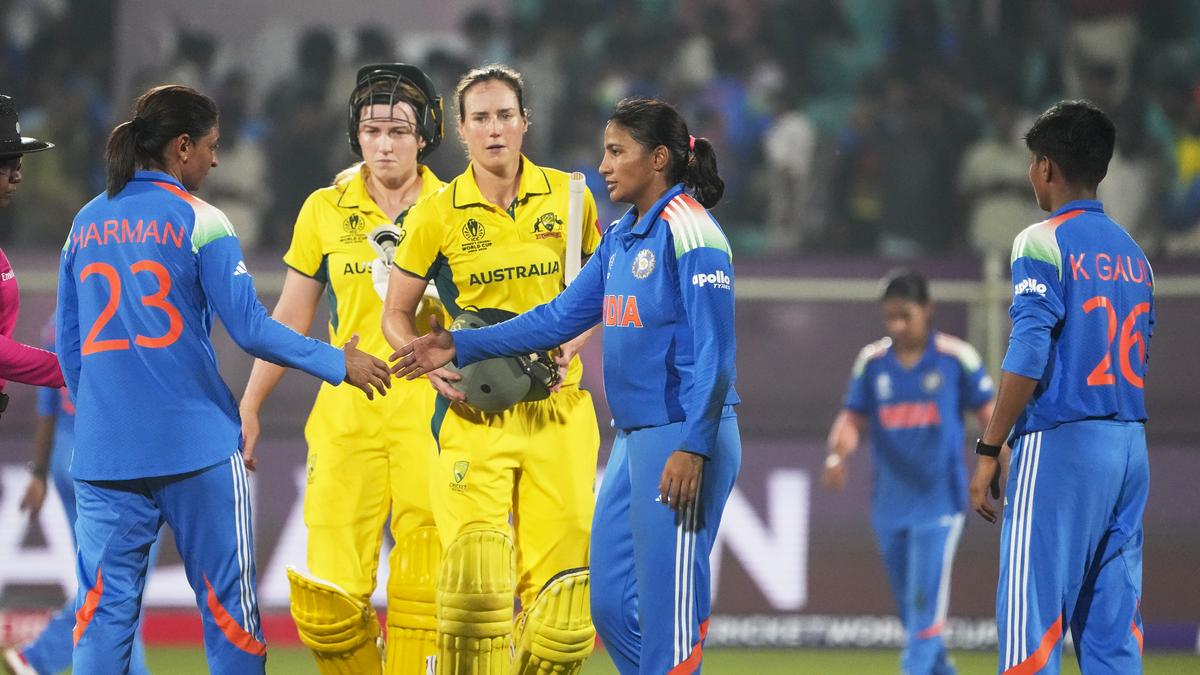After two defeats on the bounce in the World Cup, India women’s coach Amol Muzumdar has hinted that the management is ready to ponder over the inclusion of a sixth bowler and bring more fluidity in the batting order.
South Africa and Australia handed India identical three-wicket defeats in the space of four days to peg back the home side’s campaign in the ICC showpiece.
“Obviously, after this game (vs Australia) we’ll have a look at it (five-bowler approach) and I’m sure the team management will have a proper discussion about this and then we’ll take a right call as we approach the next game. I’m sure about it,” Muzumdar said in the post-match press conference.
India will face England in their next match at Indore on Sunday, and the time before it could be devoted to getting the team combination right.
Both South Africa and Australia exposed the frailty of India’s five-bowler strategy, targeting the inexperienced pacers Kranti Gaud and Amanjot Kaur while safely navigating through the spinners’ spell.
In the latest instance, the Aussies, led by centurion skipper Alyssa Healy, smashed 141 runs from the 18 overs bowled jointly by Gaud and Kaur.
But they were more watchful against left-arm spinner Sree Charani and off-spinner Deepti Sharma, who were on the money on Sunday, conceding only 93 runs in their combined 20 overs for five wickets.
In that situation, India can think of bringing in left-arm spinner Radha Yadav into the mix if the conditions permit it in Indore or in the subsequent matches in Navi Mumbai.
India’s conventional approach to batting order formation has also hurt them badly in this tournament.
Once Smriti Mandhana and Pratika Rawal added 155 runs in 24.3 overs, India had a chance to exploit the platform by promoting a dynamic batter like Richa Ghosh or Jemimah Rodrigues.
But they stuck to the order of Harleen Deol at No 3 and skipper Harmanpreet Kaur at No 4, and both the batters did not exactly do justice to the expectations on them.
Deol (38 off 42 balls) and Harmanpreet (22, 17 balls) mitigated India’s momentum to a good extent with sluggish knocks and allowed the Aussies to find a small foothold.
Harmanpreet’s 171 against the Antipodeans in the 2017 World Cup semifinals was a seminal moment in India’s women’s cricket history, but eight years have passed since that innings and, now, it carries only a nostalgic value in the practical world.
So, will India change their batting order? “I think we have got a very settled batting lineup. Would not like to shuffle it around too much but when the need arises, you know we are flexible about it. We do have that luxury of sending Richa in and at times we’ve got the services of Deepti Sharma who can go out there and give us that option of a left-hander as well as a player who grinds and gets those singles easily.
“So, I think we do have that option in the lower-order. But I would not like to tinker too much with the batting lineup,” said Muzumdar.
It’s a positive sign that at least India are giving a thought to such options ahead of crucial clashes against England and New Zealand.
In that context, Muzumdar also hoped that the batters and bowlers will collectively find a way to apply finishing touches to their respective jobs.
“I always says this – even in the dressing room…we need a good start but we need a better finish. So, if you see the finish that we had in the South Africa game, as far as bowling is concerned in the last five overs, we ended up losing that game,” he added.
South Africa too had trained their guns on Indian pacers in the chase of 252, as Nadine de Klerk tore into Gaud in the 47th over to change the equation in favour of the Proteas.
“Even today (vs Australia), basically, if we would have got another 20 runs maybe things would have been different. But it’s been a gradual progress for us and there are a lot of learnings. One of the things to learn is to finish well,” he said.
The execution of that lesson will determine whether India can finish the race or their race will get finished prematurely.


